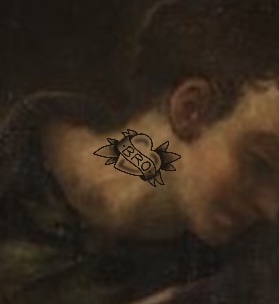Research: Christ washing the Feet of the Disciples - Jacopo Tintoretto
The scene comes from a passage in John 13 where before the Last Supper Christ washes the feet of his disciples.
When Peter refused to allow this, Christ replied that if Peter would not allow him to wash his feet then he had no place with him. Peter then asked Christ to wash his hands and head as well, but Christ said those who were clean only needed to have their feet washed. He told the disciples that they should follow his example and wash one another’s feet. The episode illustrates the need for self-abasement and fraternal love, as well as for purification by Baptism and penance.
Penance was required before receiving communion. The Counter-Reformation Church placed renewed emphasis on the proper preparation for receiving communion, which may explain the popularity of this episode as a subject for chapels of the Sacrament in late sixteenth-century Italy. Such paintings were often commissioned by confraternities, which emphasised charitable acts and duty to one another.
There are 12 people present excluding the servant woman, who appears from behind the curtain at the back of the room to the left – this means that Judas, who would betray Christ, must have already left.
The bro tattoo is a modern representation of the brotherly love that all of the disciples had for one another.
The crucifix on Christ's arm is representative of his self sacrifice by washing the feet of others while also being a widely used symbol of Jesus.
This is a water themed tattoo in the style of Japanese. It represents purity, nature and pereserverance. Koi fish are used throughout japanese culture to show perserverance as they swim upstream. This is indicative of the disciples as they are facing persecution but still showing compassion.







Comments
Post a Comment